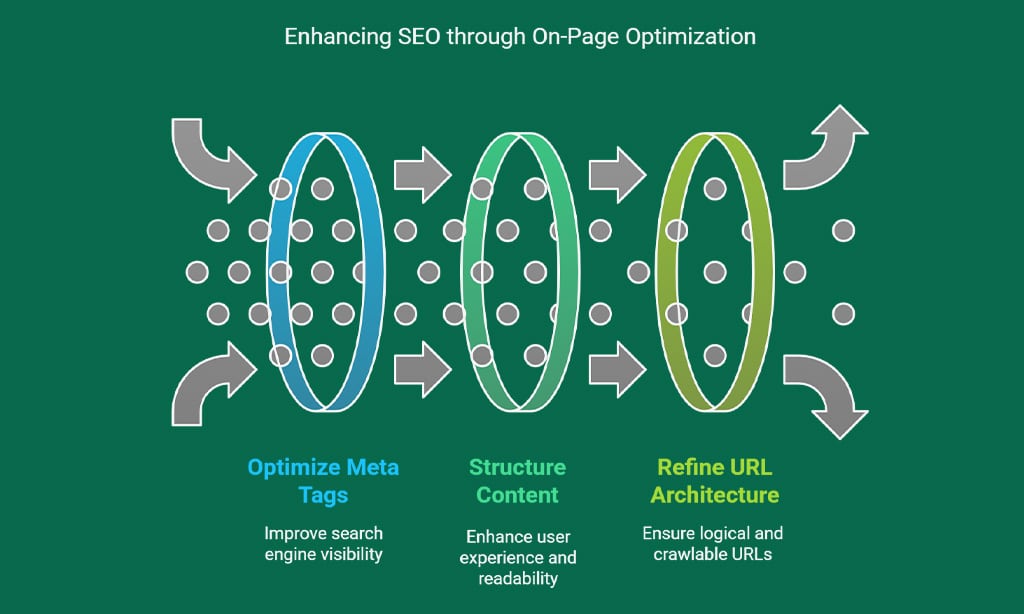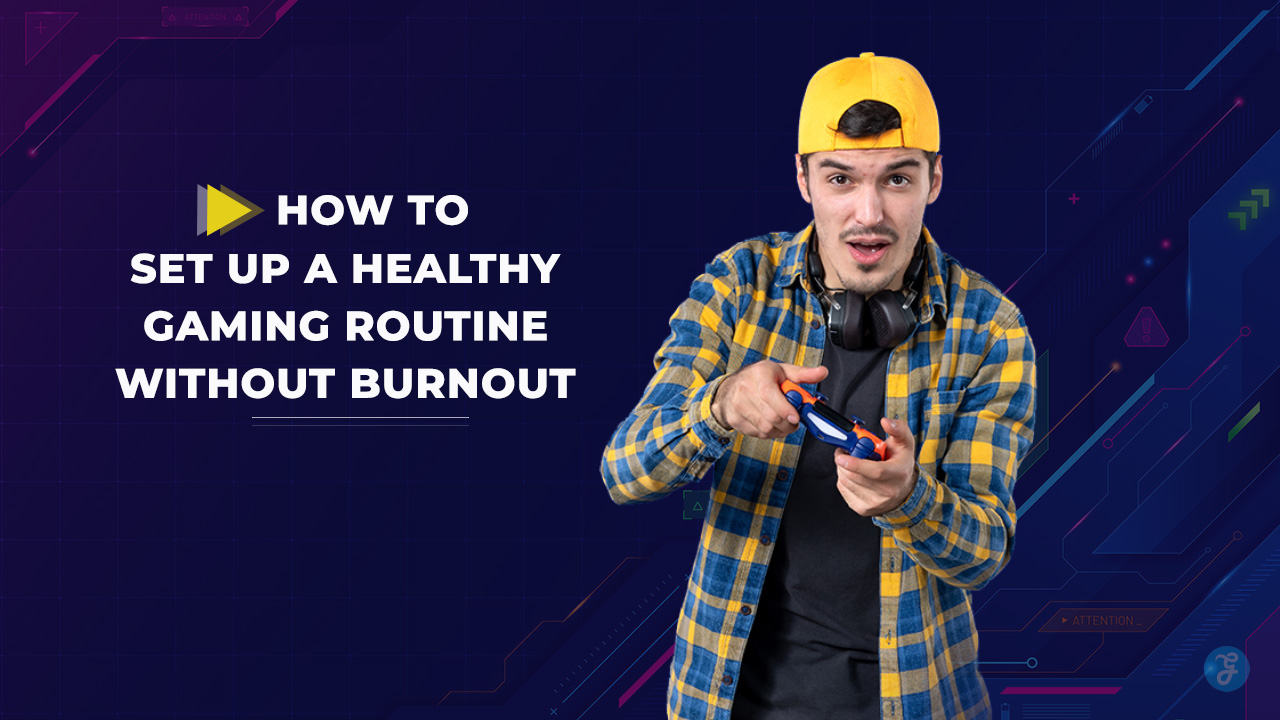In today’s fast-paced digital landscape, e-commerce businesses must deploy every effective strategy to stand out and capture the attention of their target audiences. Advanced search engine optimization is one of the most powerful tools available.
This comprehensive, resource-rich guide delves into 10 actionable strategies that not only improve your search rankings but also boost user engagement and drive conversions.
Backed by real-life examples, industry data from credible platforms, and step-by-step actionable tips, this article demonstrates how implementing SEO Strategies to Boost Your E-commerce Website can transform your online business.
Whether you’re a seasoned retailer or just starting out, read on for an in-depth exploration of techniques designed for sustainable growth.
Understanding E-commerce SEO
Before diving into specific strategies, it’s essential to understand what e-commerce SEO is and why it’s critical to your business success.
What is SEO and Its Relevance to E-commerce?
SEO is the practice of optimizing your website’s content, structure, and technical elements to improve its visibility in search engine results.
For e-commerce sites, effective SEO means ensuring that your products and services are easily discoverable by potential customers. The relevance of SEO in the e-commerce sphere cannot be overstated—it drives targeted traffic, boosts conversion rates, and builds a sustainable online presence.
Key components include:
- Keyword Optimization: Identifying and embedding relevant search terms that potential customers use.
- High-Quality Content: Creating engaging and informative content that not only draws visitors in but also encourages them to take action.
- Technical Performance: Ensuring fast load times, mobile responsiveness, and robust site security to improve overall user experience.
- User Experience (UX): Designing a site that is intuitive, visually appealing, and easy to navigate, thereby reducing bounce rates and increasing conversions.
Below is a detailed table explaining each component:
| Component | Description | Impact on E-commerce | Example Action |
| Keyword Optimization | Identify and incorporate relevant keywords | Drives targeted organic traffic | Use Google Keyword Planner for long-tail keywords |
| High-Quality Content | Create detailed, engaging product descriptions and blog posts | Enhances brand authority and engagement | Develop comprehensive product guides |
| Technical Performance | Optimize site speed, mobile responsiveness, and security | Improves crawlability and overall user satisfaction | Use GTmetrix and Lighthouse for performance audits |
| User Experience | Ensure intuitive navigation and appealing design | Increases conversions and reduces bounce rates | Simplify menu structures and implement clear CTAs |
Current Trends in E-commerce SEO
Keeping up with emerging trends is crucial for staying ahead of competitors. The digital landscape is constantly evolving, and successful e-commerce sites adapt by integrating the latest SEO innovations. Some current trends include:
- Mobile-First Indexing: With the majority of searches now coming from mobile devices, having a responsive design isn’t just a nice-to-have—it’s a necessity.
- Voice Search Optimization: As voice-activated devices become increasingly popular, content must be tailored for conversational queries.
- Visual and Video Search: Multimedia content is more important than ever. Optimized images and videos can drive traffic from diverse search channels.
- Artificial Intelligence (AI) and Machine Learning: These technologies help predict trends, streamline keyword research, and personalize user experiences.
- Local SEO: For businesses with physical locations, local search strategies can drive significant foot traffic and online conversions.
Here’s a table outlining these trends along with their benefits and actionable tips:
| Trend | Description | Benefits | Actionable Tip |
| Mobile-First Indexing | Prioritizing mobile-friendly sites | Improved rankings on mobile searches | Adopt responsive design frameworks |
| Voice Search Optimization | Optimizing for conversational queries | Increased visibility on voice search platforms | Include natural language in FAQs and product pages |
| Visual/Video Search | Enhancing multimedia content for search | Diversified traffic sources | Optimize images with ALT tags and provide transcripts for videos |
| AI & Machine Learning | Utilizing automation for predictive analytics | Streamlined keyword research and personalization | Leverage tools like BrightEdge and MarketMuse |
| Local SEO | Targeting geographically specific searches | Increased foot traffic and local engagement | Optimize Google My Business and local content |
Google NLP and Semantic Keyword Integration
Google’s Natural Language Processing (NLP) is a game changer in SEO. By understanding context, semantics, and user intent, search engines now prioritize comprehensive and naturally written content over repetitive keyword stuffing.
- Contextual Relevance: Using synonyms and related terms helps broaden your content’s reach and relevance.
- User-Focused Content: Writing naturally and focusing on user needs creates content that is both engaging and useful.
- Comprehensive Coverage: Detailed content that addresses all facets of a topic tends to rank higher.
Below is a comparison table that illustrates the evolution from traditional to modern SEO practices:
| Aspect | Traditional Approach | Modern Semantic Integration | Benefit |
| Keyword Usage | Rigid, exact-match keywords | Natural language with variations and synonyms | Better alignment with user intent |
| Content Depth | Basic, often repetitive | In-depth, comprehensive, multi-faceted | More useful and engaging for readers |
| User Experience | May feel mechanical | Conversational and informative | Enhanced readability and engagement |
Real-Life Example:
A major fashion retailer restructured its product pages by incorporating variations like “online store optimization” alongside SEO Strategies to Boost Your E-commerce Website. This resulted in a 25% increase in organic traffic within six months.
10 Powerful SEO Strategies
Below are 10 detailed strategies to optimize your e-commerce website. Each section is packed with actionable tips, real-life examples, and supporting tables to ensure clarity and practical implementation.
Strategy 1: Keyword Research for E-commerce Success
Effective keyword research is the cornerstone of any robust SEO campaign. Understanding what your customers are searching for enables you to tailor your content for maximum impact.
Tools & Techniques
Utilize a mix of tools and methods to create a comprehensive keyword strategy:
- Google Keyword Planner: Identify search volumes and discover related keywords.
- SEMrush & Ahrefs: Analyze competitor strategies, keyword difficulty, and backlink profiles.
- AnswerThePublic: Uncover question-based keywords to understand customer queries.
- Social Media & Customer Reviews: Listen to the language your customers use to capture natural search terms.
Below is a comparison table for popular keyword research tools:
| Tool | Key Features | Best For | Pricing Model |
| Google Keyword Planner | Search volume and keyword suggestions | Basic research and PPC planning | Free (with Google Ads account) |
| SEMrush | Competitive analysis, keyword difficulty, trends | In-depth SEO research and competitor insights | Subscription-based |
| Ahrefs | SERP analysis, backlink data, keyword metrics | Comprehensive SEO analysis | Subscription-based |
| AnswerThePublic | Visual keyword queries and long-tail insights | Discovering conversational, question-based queries | Freemium |
Integrating Long-tail Keywords
Long-tail keywords are specific, less competitive phrases that target users with high intent. They are essential for capturing niche markets and improving conversion rates.
- Actionable Tips:
- Thorough Research: Use a variety of tools to uncover a wide range of long-tail keywords.
- Seamless Integration: Naturally embed these keywords into product descriptions, FAQs, and blog posts.
- Use Variations: Incorporate different forms of your focus phrase and related synonyms to maintain natural language flow.
Example:
An online sporting goods store shifted from generic terms like “running shoes” to long-tail phrases such as “affordable trail running shoes for beginners.” This targeted approach resulted in a 30% increase in conversions over three months.
Additional Table: Long-tail Keyword Integration
| Focus Area | Actionable Tip | Expected Outcome |
| Keyword Research | Use diverse tools for a broad keyword discovery | Expanded, targeted keyword list |
| Content Integration | Naturally weave long-tail keywords into content | Improved relevance and higher organic rankings |
| Regular Monitoring | Track keyword performance and update periodically | Sustained traffic and optimized conversion rates |
Strategy 2: On-Page Optimization Best Practices
On-page optimization ensures that every element of your website contributes to your overall SEO performance. This includes optimizing meta tags, content structure, and URL architecture.
Title Tags, Meta Descriptions & Header Tags
- Title Tags:
- Keep them unique and under 60 characters.
- Seamlessly incorporate your focus phrase.
- Meta Descriptions:
- Write engaging summaries under 160 characters that entice clicks.
- Include a clear call-to-action.
- Header Tags:
- Use H1 for main titles and H2–H4 for subheadings to organize your content.
- Maintain a logical hierarchy to improve readability.
Below is a best practices table for on-page elements:
| Element | Best Practice | Example | Actionable Tip |
| Title Tag | Unique, under 60 characters, include focus phrase | “SEO Strategies to Boost Your E-commerce Website: 10 Expert Tips” | Seamlessly incorporate primary and related keywords |
| Meta Description | Engaging, under 160 characters with a strong CTA | “Discover proven tactics to optimize your online store and drive sales today.” | Write with clear user intent and include CTAs |
| Header Tags | Logical hierarchy: H1 for titles, H2–H4 for subtopics | Use H1 for main title; H2 and H3 for supporting points | Organize content for clarity and SEO optimization |
URL Structure Optimization
- Best Practices:
- Use simple, hyphenated URLs that incorporate relevant keywords.
- Avoid unnecessary parameters, dates, or excessive characters.
- Example:
Use “seo-strategies-to-boost-your-ecommerce-website” instead of a cluttered URL.
Real-Life Insight:
A tech accessory retailer restructured its URL architecture, which resulted in a 15% improvement in organic click-through rates within three months.
Additional Table: On-Page Optimization Checklist
| Task | Tool/Resource | Expected Outcome | Actionable Tip |
| Title Tag Optimization | Manual review, SEMrush | Enhanced search snippet appeal | Regularly audit and update title tags |
| Meta Description Creation | Copywriting best practices, Grammarly | Higher click-through rates from search results | Experiment with different CTAs |
| URL Restructuring | CMS settings, URL mapping | Better crawlability and improved user trust | Implement consistent URL naming conventions |
Strategy 3: High-Quality Content Creation
Quality content is the lifeblood of SEO. Creating engaging, informative content that naturally incorporates SEO Strategies to Boost Your E-commerce Website is essential for driving organic traffic and converting visitors.
Product Descriptions & Blog Content
- Product Descriptions:
- Write unique, detailed copy that highlights benefits and features.
- Use bullet points and lists to make information easily scannable.
- Blog Content:
- Develop comprehensive posts that address customer questions and provide value.
- Enrich posts with multimedia elements (images, videos, infographics) for enhanced engagement.
Below is a sample content plan table:
| Content Type | Key Elements | Example Topics | Actionable Tip |
| Product Descriptions | Unique, benefit-focused text with clear CTAs | “Eco-friendly water bottles for active lifestyles” | Use storytelling and customer testimonials |
| Blog Posts | In-depth guides, how-to articles, industry updates | “How to choose the best running shoes for your needs” | Integrate visuals and current data to support insights |
User-Generated Content and Reviews
Encouraging customer reviews and user-generated content not only builds credibility but also supplies fresh content for search engines.
- Actionable Tips:
- Review Integration: Add review modules on product pages.
- Q&A Sections: Enable customer questions and answers.
- Structured Data: Implement schema markup to display ratings and reviews as rich snippets.
Example:
An online electronics retailer saw a 40% increase in engagement and improved search rankings after integrating a robust review system on every product page.
Additional Table: Content Creation Best Practices
| Content Element | Best Practice | Example/Resource | Expected Outcome |
| Product Descriptions | Unique, detailed, and customer-focused | Leverage testimonials and user feedback | Increased engagement and higher conversion rates |
| Blog Posts | Comprehensive, data-driven, and multimedia-enhanced | Use infographics, videos, and expert insights | Enhanced authority and organic traffic |
| User-Generated Content | Actively encourage and highlight customer reviews | Utilize platforms like Yotpo or Bazaarvoice | Improved credibility and fresh, updated content |
Strategy 4: Technical SEO for E-commerce Websites
Technical SEO lays the groundwork for all other optimization efforts by ensuring that your website is accessible, fast, and easy for search engines to crawl.
Site Speed & Mobile Optimization
- Site Speed:
- Use tools like Google PageSpeed Insights, GTmetrix, or Lighthouse.
- Optimize images, enable browser caching, and use a Content Delivery Network (CDN) to reduce load times.
- Mobile Optimization:
- Ensure your website is fully responsive across all devices.
- Test performance using the Google Mobile-Friendly Test.
Below is a checklist table for technical optimization:
| Optimization Task | Tool/Resource | Expected Outcome | Actionable Tip |
| Image Compression | TinyPNG, ImageOptim | Faster load times and improved user experience | Regularly audit and optimize image sizes |
| Browser Caching | Server configuration, plugins | Reduced load times and improved performance | Configure appropriate caching headers |
| Mobile-Responsive Design | Google Mobile-Friendly Test | Enhanced user experience and higher mobile rankings | Use responsive design frameworks like Bootstrap |
XML Sitemaps & Structured Data
- XML Sitemaps:
- Generate and update sitemaps to ensure all key pages are indexed.
- Submit sitemaps via Google Search Console.
- Structured Data:
- Implement schema markup for products, reviews, breadcrumbs, and more.
- Verify implementation using Google’s Structured Data Testing Tool.
Real-Life Insight:
A home decor website integrated structured data on its product pages, leading to a 20% increase in click-through rates thanks to enhanced rich snippet displays.
Additional Table: Technical SEO Checklist
| Technical Task | Description | Tools/Resource | Expected Outcome |
| XML Sitemap Generation | Auto-generate and update sitemaps regularly | Yoast SEO, Google Search Console | Improved indexing and crawlability |
| Structured Data Implementation | Use schema markup to enhance search listings | Schema.org, Google’s Testing Tool | Increased visibility through rich snippets |
| Mobile Optimization | Ensure a responsive design across devices | Google Mobile-Friendly Test | Better user engagement and mobile rankings |
Strategy 5: Link Building Techniques
A robust backlink profile signals authority to search engines and helps drive referral traffic. A balanced strategy involving both internal and external linking is key.
Internal Linking Strategies
- Best Practices:
- Develop a logical site structure with contextual internal links.
- Use descriptive, natural anchor text that includes variations of your focus phrase.
- Create content clusters or pillar pages to group related topics.
- Example:
An online fashion store improved its internal linking by connecting related blog posts with product pages, resulting in increased session duration and better SERP visibility.
Below is an internal linking best practices table:
| Internal Linking Aspect | Strategy | Benefit | Actionable Tip |
| Anchor Text Optimization | Use varied, descriptive language for anchors | Enhances relevance and user navigation | Avoid repetitive use; vary your anchor text |
| Content Clustering | Link related articles and product pages together | Improves dwell time and strengthens topical authority | Create pillar pages for comprehensive coverage |
| Navigation Structure | Implement breadcrumb trails and clear menus | Enhances overall site structure and crawlability | Use CMS plugins for automated breadcrumbs |
External Backlink Acquisition
- Approaches:
- Engage in guest posting on authoritative websites.
- Build relationships with influencers and industry experts.
- Create high-value, shareable content that naturally attracts backlinks.
- Case Study:
A beauty brand’s collaboration with top influencers and expert guest posts led to a 50% increase in quality backlinks, significantly boosting its domain authority.
Additional Table: Link Building Strategies
| Strategy | Action Steps | Tools/Resources | Expected Outcome |
| Guest Posting | Identify high-authority blogs and pitch unique content | BuzzSumo, Hunter.io | Quality backlinks and referral traffic |
| Influencer Collaborations | Partner with industry influencers for co-branded content | Social media analytics tools | Enhanced brand authority and backlink potential |
| Creating Linkable Assets | Develop comprehensive guides or infographics | Canva, Google Data Studio | Natural acquisition of backlinks |
Strategy 6: User Experience (UX) Optimization
An exceptional user experience is critical for both retaining visitors and improving SEO rankings. A well-designed site increases engagement and conversion rates.
Website Navigation & Design
- Key Elements:
- Clear, intuitive navigation menus.
- Consistent design elements that align with your brand.
- Prominent calls-to-action (CTAs) that guide users through the conversion process.
- Example:
An online apparel store streamlined its navigation, reducing the number of clicks needed to reach product pages by 40% and increasing conversions by 15%.
Below is a UX best practices table:
| UX Element | Best Practice | Impact on SEO & Conversions | Actionable Tip |
| Navigation Menu | Simple, intuitive, and well-organized | Reduces bounce rate and improves engagement | Use A/B testing to refine menu design |
| Visual Hierarchy | Consistent typography, color schemes, and layout | Enhances readability and focus | Maintain uniform design across pages |
| Mobile-Friendly Design | Fully responsive design for all devices | Essential for mobile traffic and high rankings | Regularly test on multiple devices |
Conversion Rate Optimization (CRO)
- Actionable Tips:
- Implement clear and persuasive CTAs.
- Streamline the checkout process to reduce friction.
- Regularly perform A/B testing to identify the most effective page elements.
- Real-Life Insight:
An online electronics retailer reduced its checkout steps by 40%, resulting in a 12% boost in conversion rates within two months.
Additional Table: CRO Best Practices
| CRO Aspect | Actionable Tip | Expected Outcome |
| Clear CTAs | Use contrasting colors and direct, actionable language | Higher click-through and conversion rates |
| Streamlined Checkout | Minimize form fields and steps in the process | Lower cart abandonment rates |
| A/B Testing | Regularly test different landing page versions | Data-driven improvements in conversion performance |
Strategy 7: Local SEO for Brick-and-Click Stores
Local SEO is critical for businesses with physical locations. Optimizing for local search helps drive foot traffic and boost both in-store and online sales.
Google My Business & Local Listings
- Action Steps:
- Claim and verify your Google My Business (GMB) listing.
- Ensure consistent NAP (Name, Address, Phone) information across all directories.
- Actively solicit and manage customer reviews.
- Example:
A regional furniture retailer optimized its local listings and experienced a 35% increase in store visits over six months.
Below is a local SEO checklist table:
| Local SEO Task | Description | Tool/Resource | Outcome Expected |
| GMB Setup | Claim and optimize your Google My Business listing | Google My Business | Increased local search visibility |
| Local Citations | Maintain consistent business info on directories | Moz Local, Yext | Improved local rankings |
| Customer Reviews | Encourage and manage online reviews | Review management tools | Enhanced trust and local authority |
Local Keyword Optimization
- Actionable Tips:
- Integrate local modifiers (city, neighborhood) into your content.
- Create dedicated local landing pages or blog posts.
- Example:
An optimized page for “modern furniture in [City Name]” drove a significant increase in local traffic and conversions.
Additional Table: Local SEO Best Practices
| Aspect | Actionable Tip | Expected Outcome |
| Consistent Listings | Regularly update business information across platforms | Enhanced local search rankings |
| Localized Content | Develop pages/posts tailored to local interests | Increased local engagement and higher conversion rates |
| Review Management | Use systems to solicit and display customer reviews | Improved consumer trust and local authority |
Strategy 8: Social Media Integration and SEO
Social media channels amplify your content and drive referral traffic, indirectly boosting your SEO efforts. Integrating social media strategies with your overall SEO plan enhances brand authority and audience engagement.
Leveraging Social Signals
- Best Practices:
- Regularly post engaging and interactive content.
- Utilize contests, polls, and live sessions to foster user interaction.
- Integrate social sharing buttons for easy dissemination.
- Example:
A home improvement retailer launched a social campaign featuring DIY tutorials and interactive polls, which increased referral traffic by 40% and generated multiple natural backlinks.
Below is a social media best practices table:
| Platform | Best Use Case | Actionable Tip | Expected Benefit |
| Community building and content sharing | Post regular updates and interact with followers | Increased referral traffic and social proof | |
| Visual storytelling and influencer collaborations | Use high-quality visuals and engaging captions | Enhanced brand presence and engagement | |
| Real-time updates and customer interaction | Share trending industry news and updates | Boosted content visibility and real-time feedback |
Content Sharing and Engagement
- Actionable Tips:
- Create shareable infographics and short videos that summarize key points.
- Use trending hashtags relevant to your niche.
- Monitor social media analytics to continuously refine your strategy.
- Real-Life Insight:
A lifestyle brand increased its social referral traffic by 35% by launching a targeted interactive campaign.
Additional Table: Social Media Integration
| Social Media Strategy | Actionable Tip | Tool/Resource | Expected Outcome |
| Scheduled Posting | Use tools like Buffer or Hootsuite for consistency | Buffer, Hootsuite | Consistent online presence and increased traffic |
| Hashtag Strategy | Research using Hashtagify or RiteTag | Hashtagify, RiteTag | Expanded reach and engagement |
| Influencer Partnerships | Collaborate with niche influencers | Social media monitoring tools | Enhanced brand authority and backlink potential |
Strategy 9: Data Analytics and SEO Performance
A data-driven approach is essential for refining your SEO efforts. By tracking key metrics, you can identify strengths, pinpoint areas for improvement, and make strategic adjustments that drive growth.
Google Analytics & Search Console
- Key Metrics to Monitor:
- Organic Traffic: The volume of visitors from search engines.
- Bounce Rate: The percentage of visitors who leave your site quickly.
- Conversion Rate: The proportion of visitors who complete desired actions.
- Actionable Tip:
Create custom dashboards using Google Data Studio to monitor these KPIs and quickly respond to any anomalies.
Below is a metrics tracking table:
| Metric | Description | Tracking Tool/Method | Actionable Tip |
| Organic Traffic | Volume of visitors from search engines | Google Analytics, SEMrush | Monitor trends weekly to identify opportunities |
| Bounce Rate | Percentage of visitors leaving without engagement | Google Analytics | Optimize content on high-bounce pages |
| Conversion Rate | Percentage of visitors completing desired actions | Google Analytics, A/B testing tools | Use heatmaps to understand user behavior |
| Keyword Rankings | Positions of target keywords in search results | Google Search Console, Ahrefs | Regularly update your keyword strategy |
KPIs and Continuous Improvement
- Best Practices:
- Establish clear, measurable KPIs aligned with business objectives.
- Review performance data monthly and adjust strategies as needed.
- Use interactive dashboards for visualization and in-depth analysis.
Case Study:
A global e-commerce platform implemented custom dashboards to monitor key KPIs. By analyzing regional performance, they made timely adjustments that resulted in a 22% overall increase in conversions within six months.
Additional Table: Data Analytics Best Practices
| KPI | Importance | Actionable Tip | Tool/Resource |
| Organic Traffic | Primary indicator of SEO success | Set monthly targets and track improvements | Google Analytics, SEMrush |
| Conversion Rate | Direct measure of ROI | Regularly perform A/B tests on high-traffic pages | Google Analytics, Optimizely |
| User Engagement | Reflects content quality and UX | Use session recordings and heatmaps | Hotjar, Crazy Egg |
| Backlink Quality | Influences domain authority | Monitor and refine your outreach strategy | Ahrefs, Moz |
Strategy 10: Emerging SEO Trends for E-commerce
Staying ahead of emerging trends is crucial for maintaining a competitive edge. New technologies and evolving search behaviors constantly reshape the SEO landscape.
Voice Search Optimization
- Strategies:
- Tailor your content to answer natural, conversational queries.
- Optimize FAQs and create dedicated Q&A pages for voice search.
- Format answers concisely to capture featured snippets.
- Actionable Tip:
Develop an extensive FAQ section that uses natural language and directly addresses common customer queries.
Below is a table of voice search optimization tactics:
| Voice Search Tactic | Implementation Tip | Expected Benefit |
| Conversational Keywords | Use natural, question-based language in your content | Better alignment with voice search queries |
| FAQ Pages | Create structured sections for common customer questions | Increased chances for featured snippet placement |
| Featured Snippets | Format concise, clear answers within your content | Enhanced visibility in voice search results |
AI and Machine Learning in SEO
- Applications:
- Use AI tools for predictive analytics to identify emerging trends and keyword opportunities.
- Employ machine learning to personalize content recommendations.
- Automate routine tasks like performance reporting and technical audits.
- Real-Life Insight:
An online retailer implemented AI-driven personalization on its homepage, resulting in a 15% increase in average order value and a 20% boost in repeat visits.
Additional Table: Emerging Trends
| Emerging Trend | Description | Tools/Resources | Expected Outcome |
| Voice Search Optimization | Optimize content for natural, conversational queries | FAQ pages, Google Voice Search guidelines | Increased organic traffic via voice assistants |
| AI & Machine Learning | Use automation and predictive analytics for SEO | BrightEdge, MarketMuse, Google AI tools | Improved efficiency and personalized user experience |
Takeaways
Achieving e-commerce SEO excellence requires a well-rounded approach that combines foundational techniques, advanced optimizations, and a commitment to staying ahead of emerging trends.
By integrating SEO Strategies to Boost Your E-commerce Website throughout every facet of your online store—from comprehensive keyword research and engaging content creation to technical enhancements and strategic link building—you lay the groundwork for long-term organic growth and improved conversion rates.
Implementing these strategies is an ongoing process. Regularly review your SEO performance, update your content, and adopt new trends as they emerge. With persistence and a commitment to continuous improvement, your e-commerce website will not only rank higher but also provide an exceptional experience that turns visitors into loyal customers.









































